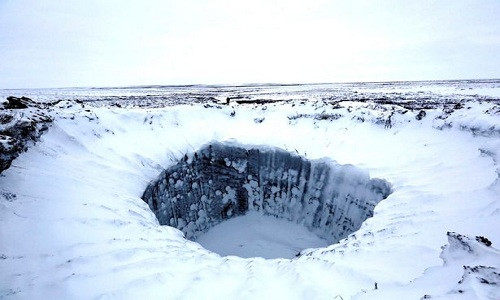70m wide crater appeared after explosion lit up the sky
Residents on the Taimyr Peninsula, Siberia saw the sky light up after an explosion that was heard nearly 100 km away, followed by the birth of a mysterious crater that is growing larger and larger.
 |
When it first formed, the crater was only about 4 meters in diameter. Photo: Will Stewart. |
According to Mirror, the crater was first discovered by reindeer herders who nearly fell into the hole after an explosion in 2013. At that time, the diameter of the crater was only about 4m with an estimated depth of 99m. Now the Deryabinsky crater is gradually expanding into a small lake with a width of 70m. The permafrost layer on the crater wall is melting under the summer sun.
Dr. Vladimir Epifanov, from Novosibirsk, Russia, gathered details of the massive explosion and went to inspect Deryabinsky, the most distant of dozens of new craters that have appeared in northern Siberia. Villagers living 72 to 97 kilometers away from the crater still heard the explosion and saw a bright flash in the sky, Epifanov said. “The explosion doesn’t look like it was man-made, but it doesn’t look like it was natural either,” one witness said.
The blast comes a month after a large meteor exploded over Chelyabinsk, leading local leaders to believe it was another meteorite that had crashed into the area. Most experts believe the craters were caused by methane explosions triggered by warming temperatures in Russia’s far north. In particular, many of the craters on the Yamal Peninsula were created by pingos, dome-shaped mounds with ice cores, collapsing under pressure from methane released from the permafrost thawing due to climate change.
In the case of the Deryabinsky crater, Dr. Epifanov offers a different explanation. According to him, the combustible ice more than 500 meters below the surface disintegrated, releasing methane gas. The methane gas accumulated at a depth of 99 meters before exploding. Russia is now monitoring the pingos via satellite to guard against new explosions in Siberia.
According to VNE
| RELATED NEWS |
|---|
